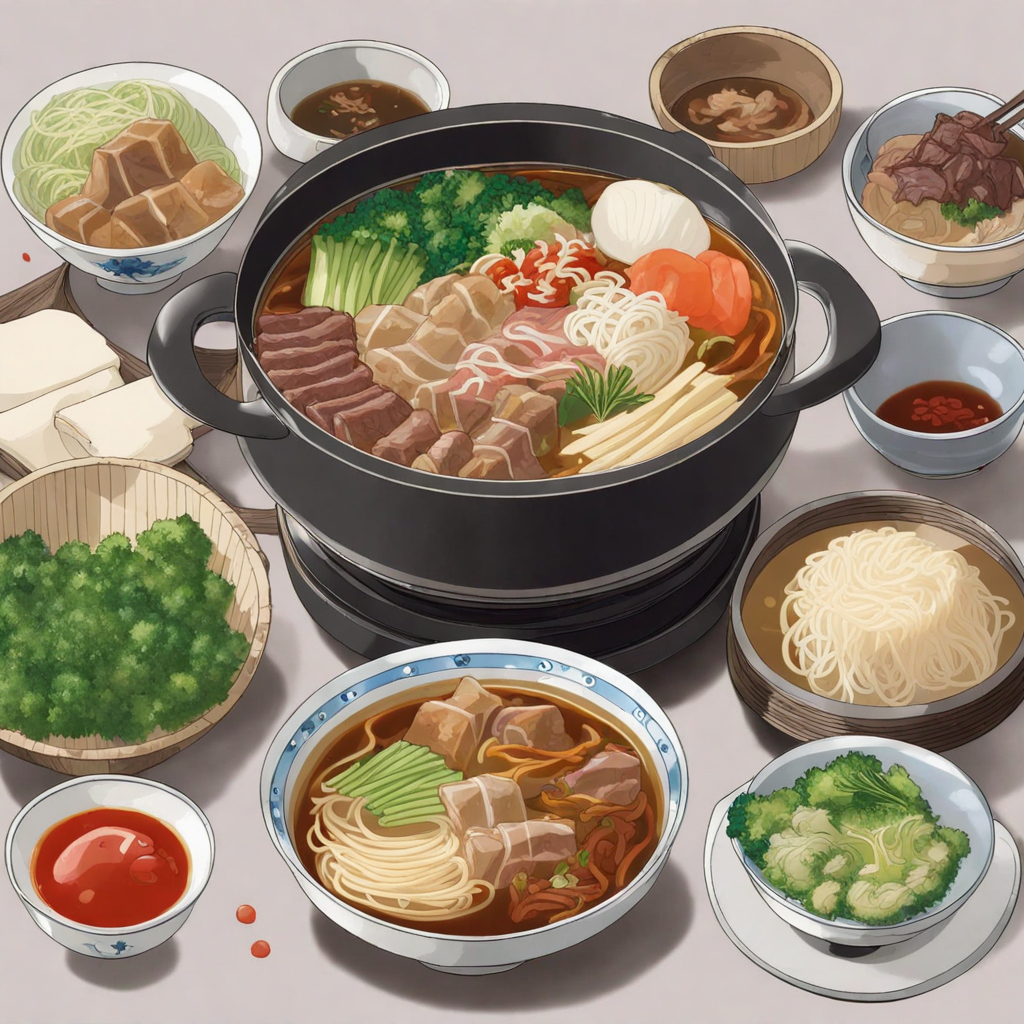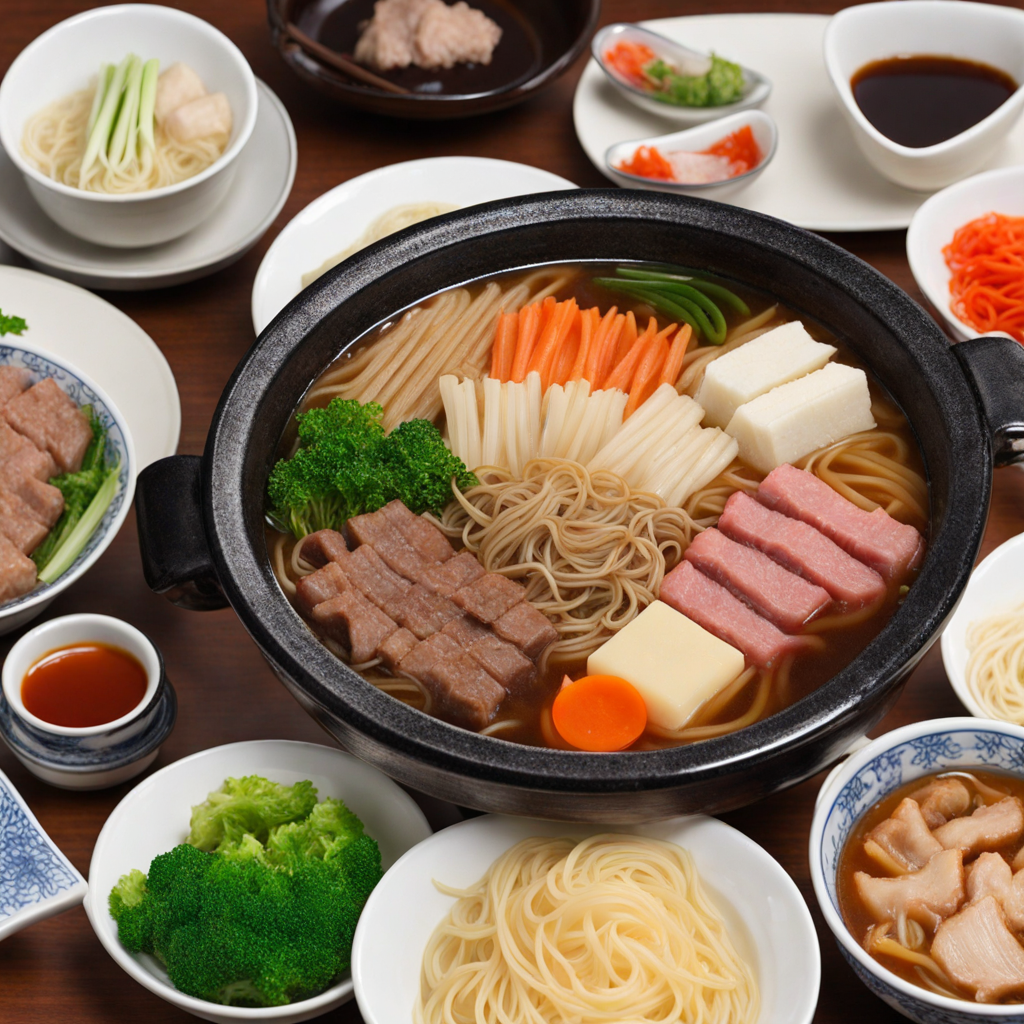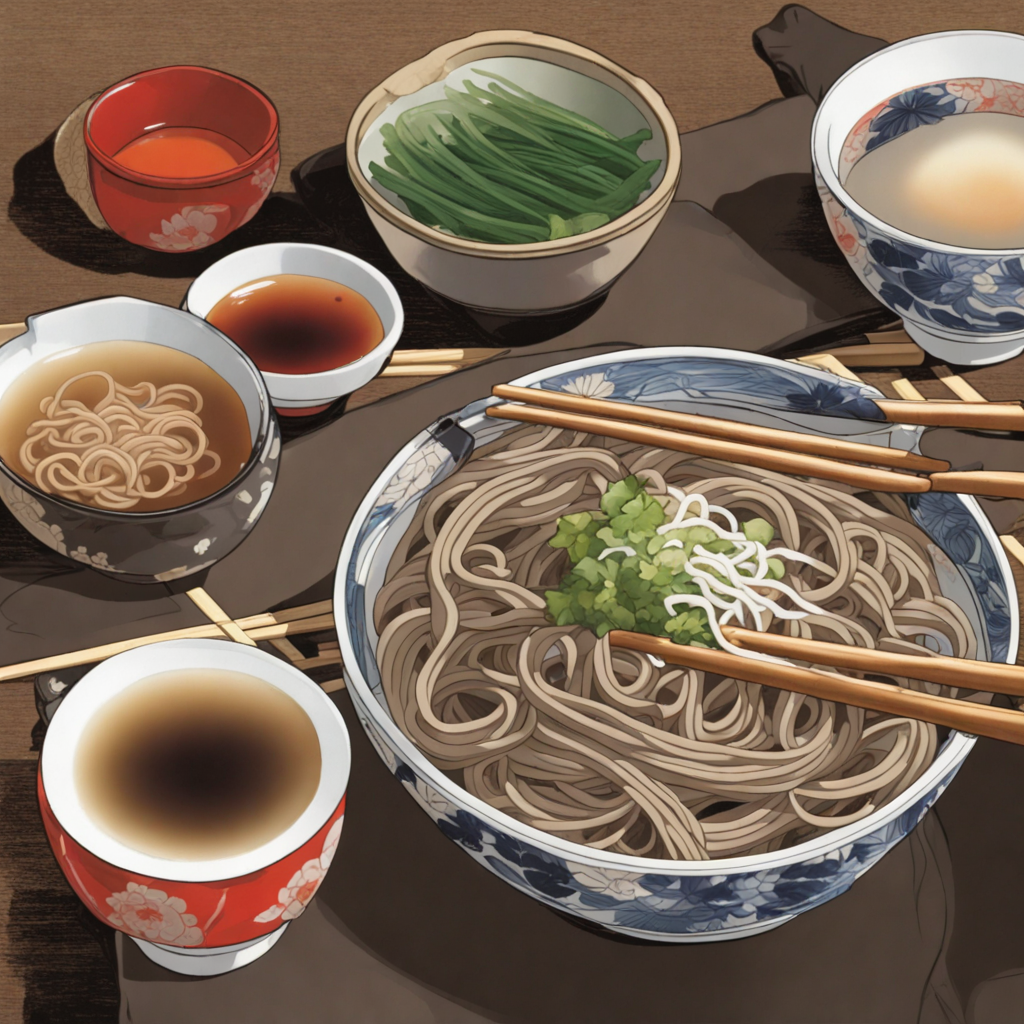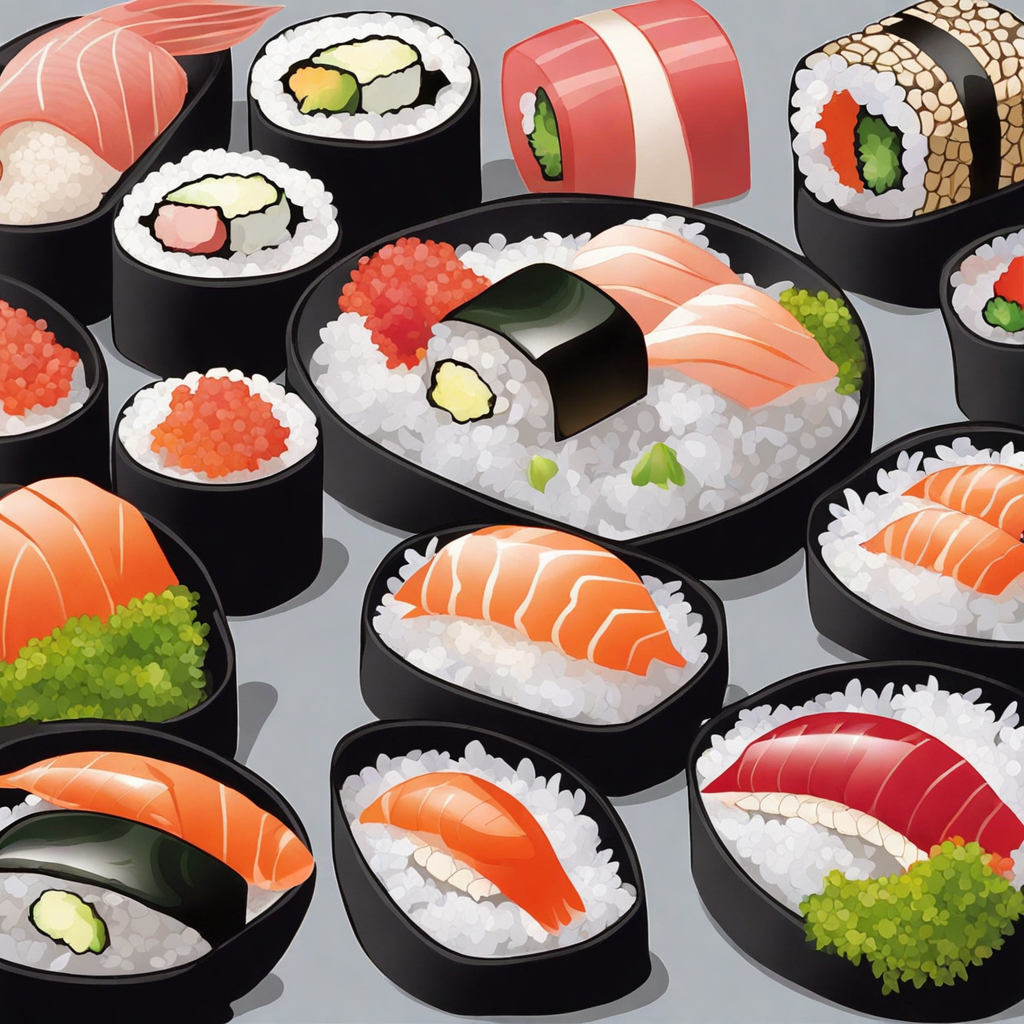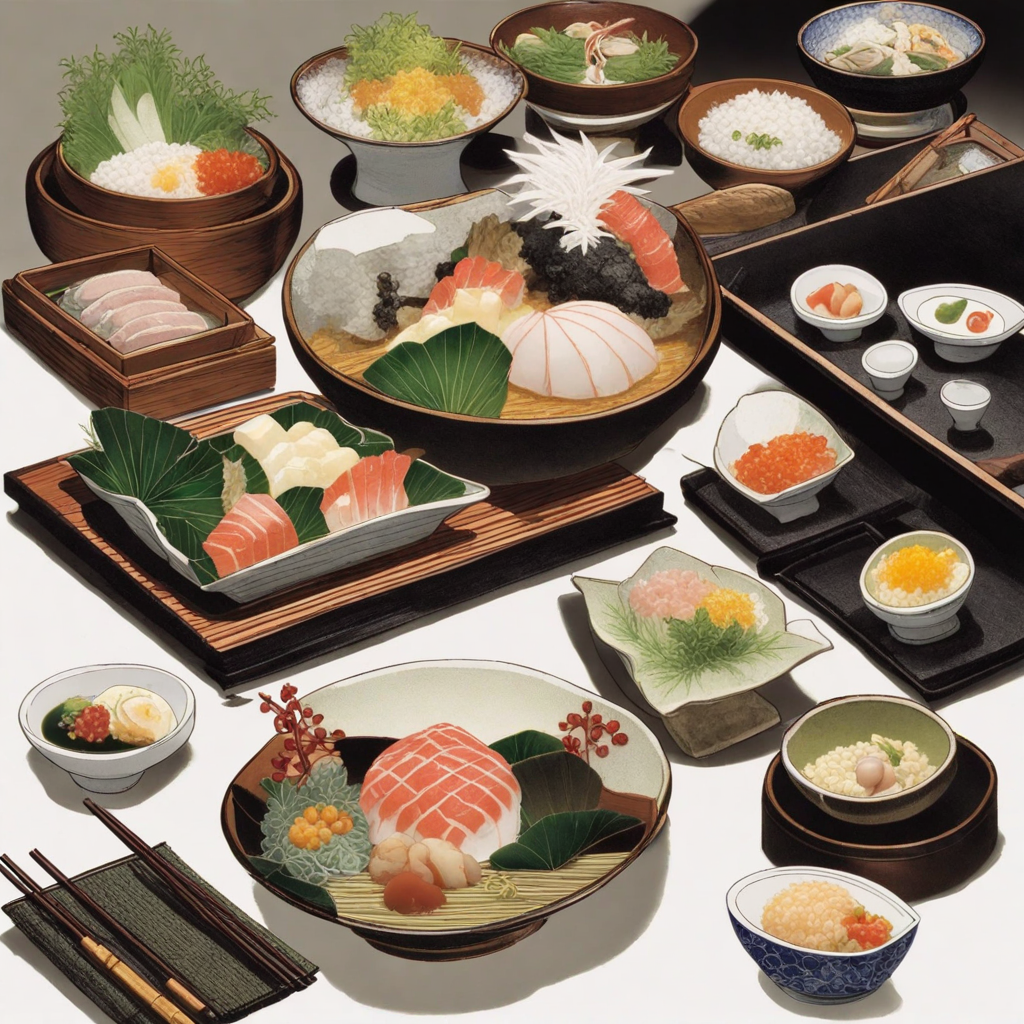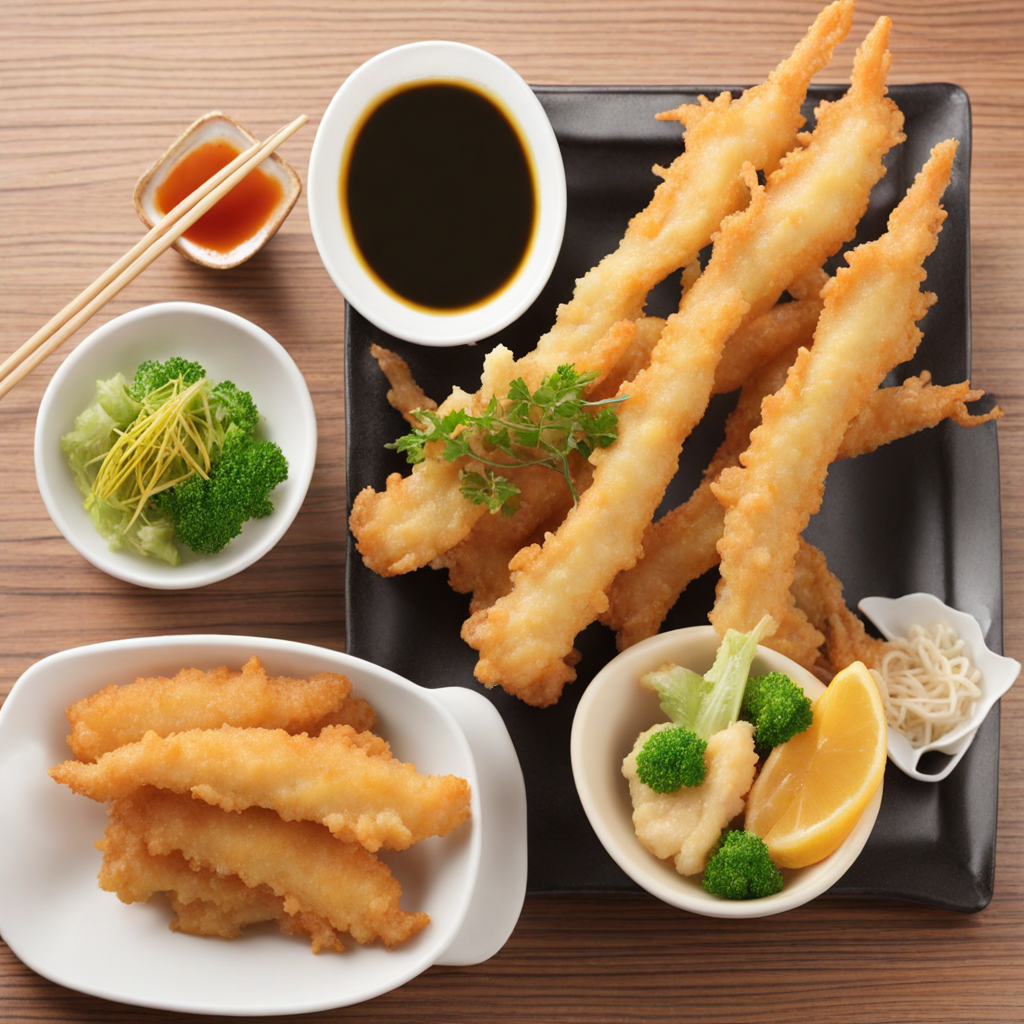Sukiyaki
Sukiyaki is a beloved Japanese dish that beautifully combines the simplicity of hot pot cooking with a rich, savory flavor profile. At its core, Sukiyaki features thinly sliced beef, often ribeye or sirloin, which is cooked to tenderness in a shallow, iron pot. The meat is typically simmered in a sweet and savory sauce known as 'warishita,' made from a mix of soy sauce, sugar, and mirin. This combination creates a harmonious balance of umami and sweetness, making each bite a delightful experience for the palate. In addition to beef, Sukiyaki is often accompanied by an array of fresh vegetables, such as Napa cabbage, shiitake mushrooms, and green onions. Each ingredient is added to the pot sequentially, allowing them to absorb the rich flavors of the broth. Tofu and glass noodles are also common additions, contributing texture and heartiness to the dish. The vibrant colors and varied textures of the vegetables not only enhance the visual appeal but also provide a range of nutrients, ensuring a well-rounded meal. One of the unique aspects of Sukiyaki is the eating ritual that accompanies it. Traditionally, diners dip the cooked ingredients into a beaten raw egg before taking a bite, which adds a creamy richness and a layer of flavor that elevates the dish. This communal cooking and dining experience fosters a sense of togetherness, making Sukiyaki a popular choice for gatherings and special occasions. With its comforting warmth and complex flavors, Sukiyaki is more than just a meal; it’s a celebration of Japanese culinary culture.
How It Became This Dish
Origins of Sukiyaki Sukiyaki, a beloved Japanese dish, has its roots deeply embedded in the culinary practices of the Edo period (1603-1868). Originally, the term “sukiyaki” referred to a cooking method rather than a specific dish. The word “suki” means to cut or slice, and “yaki” means to grill or fry. It was during this time that the Japanese began to adopt beef into their diets, which was quite revolutionary, as meat consumption had been limited prior to this period due to Buddhist influences and dietary restrictions. In the late 19th century, after the Meiji Restoration (1868), Japan opened up to Western influences, and the consumption of beef began to gain popularity among the Japanese populace. This shift coincided with the rise of the Western-style cuisine, and beef became a staple protein in various forms. Sukiyaki started to evolve into a dish that highlighted the rich flavors of thinly sliced beef cooked with vegetables in a sweet and savory sauce, marking a significant cultural shift in Japanese eating habits. \n Cultural Significance Sukiyaki is more than just a meal; it represents a communal dining experience that embodies the spirit of togetherness in Japanese culture. Traditionally, it is prepared and enjoyed at the table, with diners cooking the ingredients in a shallow iron pot, known as a “sukiyaki-nabe.” This interactive style of dining fosters conversation and connection among family and friends, making it a popular choice for gatherings and celebrations. In Japan, sukiyaki is often associated with special occasions, such as New Year’s celebrations and family reunions. The dish is appreciated not only for its delicious flavors but also for the warmth and bonding it creates among those sharing the meal. In contemporary Japan, sukiyaki has become a symbol of comfort food, bringing nostalgia and a sense of home to many Japanese people, whether they are dining in a restaurant or preparing it at home. \n Ingredients and Preparation The traditional preparation of sukiyaki involves a harmonious balance of ingredients that contribute to its distinctive flavor profile. The primary ingredient is thinly sliced beef, typically ribeye or sirloin, chosen for its tenderness and marbling. Alongside the beef, a variety of vegetables such as shiitake mushrooms, green onions, tofu, and napa cabbage are included, each adding unique textures and flavors to the dish. The cooking process begins by sautéing the beef in a mix of soy sauce, sugar, and mirin, creating a sweet and savory glaze. This mixture, known as “sukiyaki sauce,” is integral to the dish and serves as a base for cooking the other ingredients. As the beef cooks, the vegetables and tofu are added, absorbing the flavors of the sauce and enhancing the overall dish. Some variations also include udon noodles or rice to accompany the meal, allowing diners to enjoy the delicious sauce in different ways. \n Regional Variations As sukiyaki gained popularity, regional variations emerged, each reflecting local ingredients and culinary traditions. One of the most notable styles is the Osaka-style sukiyaki, which emphasizes a sweeter sauce and often uses a different cooking technique. In contrast, Kanto-style sukiyaki, originating from the Tokyo region, typically employs a more savory sauce and includes a wider range of vegetables. In the northern regions of Japan, such as Hokkaido, sukiyaki may feature local ingredients like corn or potatoes, showcasing the adaptability of the dish to regional tastes. Additionally, the choice of beef can vary, with premium cuts such as Kobe beef or Matsusaka beef often used in high-end restaurants, further elevating the dish’s reputation. \n Modern Interpretations In recent years, sukiyaki has undergone a transformation as chefs and home cooks experiment with new ingredients and cooking methods. Vegetarian and vegan versions have emerged, replacing beef with plant-based proteins such as mushrooms, seitan, or tofu, while maintaining the essence of the original dish. This adaptation reflects a growing trend towards healthier eating habits and inclusivity in the culinary world. Moreover, sukiyaki has found its way into international cuisine, with fusion dishes appearing in various countries. Some restaurants abroad offer sukiyaki-inspired dishes, incorporating local flavors and ingredients, which has helped to popularize Japanese cuisine globally. The dish’s versatility and appeal have made it a favorite among those seeking a hearty and flavorful meal. \n Conclusion: The Legacy of Sukiyaki Sukiyaki’s rich history and cultural significance continue to resonate with people both in Japan and around the world. From its humble beginnings as a cooking method in the Edo period to its status as a cherished dish enjoyed during special occasions, sukiyaki represents the evolution of Japanese culinary traditions. The communal aspect of enjoying this dish has solidified its place in the hearts of many, making it a timeless symbol of togetherness and comfort. As Japan continues to embrace modern culinary trends while honoring traditional practices, sukiyaki remains a beloved dish that captures the essence of Japanese culture—combining flavors, history, and community in every delightful bite.
You may like
Discover local flavors from Japan


